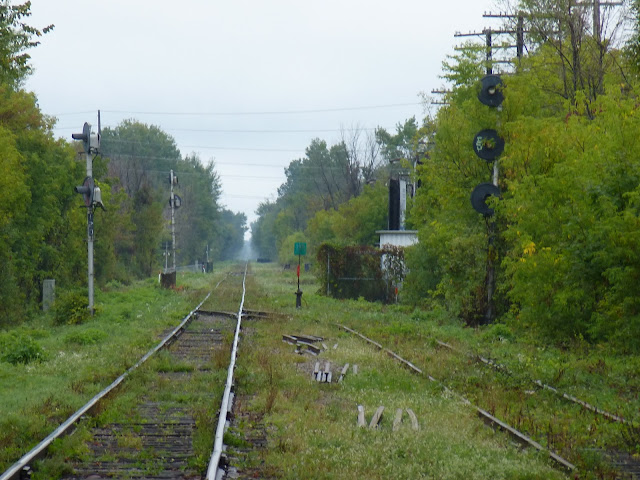For now, the Beachburg Sub will remain largely lifeless. Although some think a regional commuter system along the lines of GO Transit is inevitable on this line.
1. Although Clive Doucet lost the mayoral race handily, he is earning some plaudits for raising the possibility of regional rail for Eastern Ontario. Although I often did not find myself agreeing with Doucet when he was a city councillor, I agree with his regional rail idea. After the election, he said he was confident that Ottawa will see regional rail, along the lines of the GO Train in the Toronto area. His point was simple. Given that the Ottawa-Gatineau area now boasts more than 1.3 million people, the area is now probably big enough to sustain some form of commuter rail operation. I’m not sure if Doucet made those comments based on something he knows, but I like that he said it. I am less optimistic. I don’t see any regional rail champion in Ottawa. Everyone is aboard the LRT bandwagon, as flawed as it is.
2. For months, I’ve been trying to figure out what it is about the city’s LRT plan that bothers me. Doucet, to his credit, made this simple observation during the campaign that sums up what I feel. Phase I is too short. I have often remarked on this blog that emptying out Ottawa’s eastern suburban commuters at Blair Station and its western suburbs at Tunney’s Pasture really doesn’t benefit anyone in the short term. It only adds another step, and likely time, to my morning commute. It does nothing to take buses off the roads in the suburbs. So who does Phase I benefit? The downtown and the communities in and around the core like Westboro, Hintonburg, Wellington West, Vanier and Sandy Hill. The LRT will take the express commuter buses off the roads in those neighbourhoods, but it does nothing for massive communities like Kanata, Orleans and Barrhaven in the short term. Considering how many delays there have been with the first phase of the Confederation Line, it seems to me that it might have been a better idea to take several more years and combine Phase I and II together. At least then, the new LRT line would connect Orleans in the east and Moodie Drive in the west.
I'm not sure if it will take $25 million to reconnect the Trillium Line with the Prince of Wales Bridge, but it seems like a little foresight could have prevented the future costs.
3. It emerged during the mayoral race that it will likely require $40 million to rehabilitate the Prince of Wales Bridge to make it fit for trains again. Doucet’s campaign also estimated that reconnecting the trackage over the Ottawa River to the existing O-Train Trillium Line would cost $25 million. I’m not sure where they came up with that figure, but it seems high to me. However, I think the larger point here is that the city will have to pay dearly for its lack of foresight on this strategic rail asset that it has owned and neglected for years.
4. Surprisingly, amid the debate over commuter rail during the election campaign, there was very little said about the Moose Consortium, which has been fighting with the city over its neglect of the bridge and the connection of the bridge’s rails to the Trillium Line. You will recall that Moose won an important victory over the city not too long ago, which had forced the city to scramble.
5. One point that Doucet made during the campaign that really struck me as brilliant was his point about the viability of a regional rail system. While Watson’s camp dismissed Doucet’s plan constantly, Doucet raised the point that thousands of commuters from outlying communities like Limoges, Smiths Falls, Chelsea, Wakefield, Kemptville and Arnprior all make their way into Ottawa each day and chew up our roads, without having to pay for their maintenance. While it’s true that a regional rail system would require a substantial subsidy from all the municipalities involved, is it not better to get these cars off the roads and get these commuters paying some sort of fare to ride a train to work? At least under this system, we would be getting some sort of compensation from those who make their way into Ottawa whereas now, we get nothing.
6. Parts of Doucet’s plans called for commuter rail to parts of Kanata North, which would have been a good idea several years ago when the city had the chance to buy a small portion of the old CN Beachburg Subdivision. Sadly, nothing happened and those rails are gone. I feel bad for residents of Kanata. All this spending on light rail and they will see no benefits whatsoever for many years still. Their only hope might be some sort of connection via the old Renfrew Sub near March Road.
It was an interesting mayoral race, which had me agreeing with politicians I have never agreed with in the past. I would really like to believe Mr. Doucet that regional rail is an idea whose time has come, but I think we are now stuck with four more years of leadership that truly has no understanding of railway policy.










